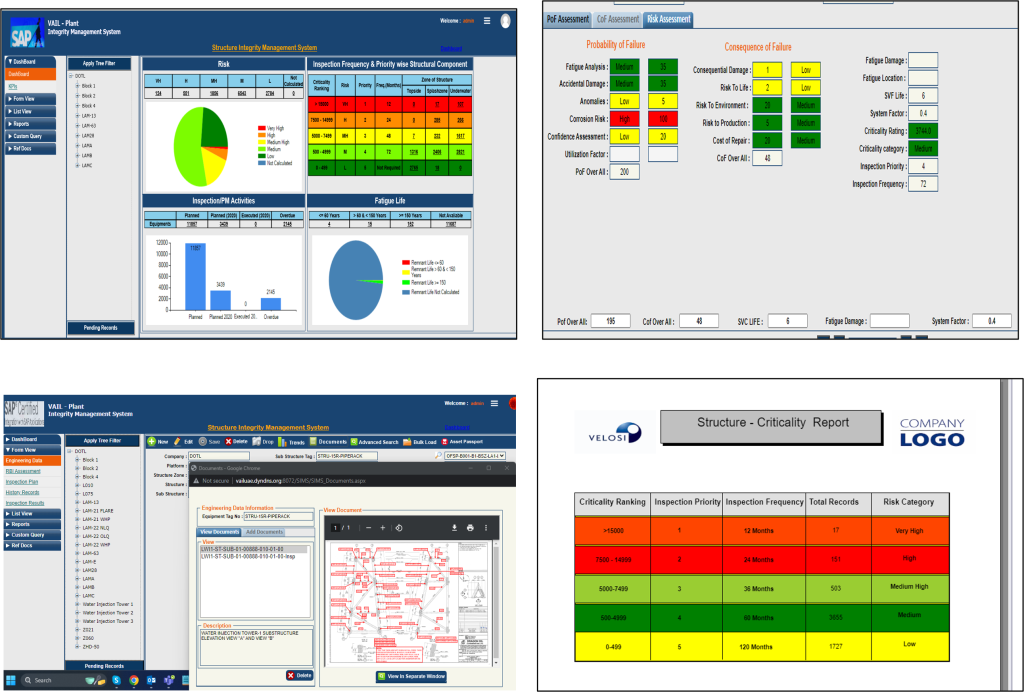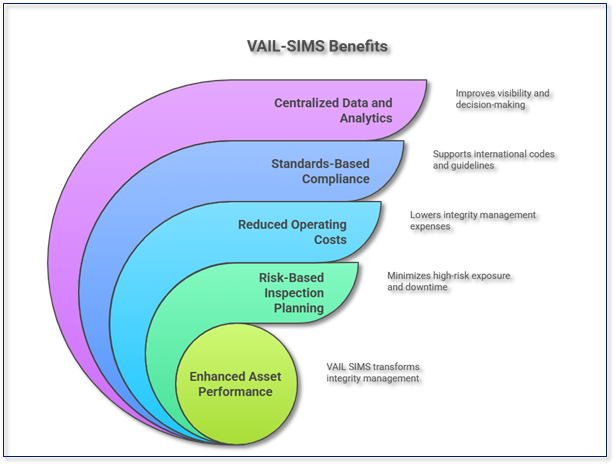- August 25, 2025
- Posted by: Velosi Author
- Categories: Engineering, Insights

Introduction
A Structural Integrity Assessment is a critical process that ensures the safety, reliability, and performance of critical assets such as buildings, offshore platforms, pipelines, industrial structures, and components (Underwater, Topside, Splash zone, etc). This specific methodology of engineering evaluation identifies weaknesses caused by several factors, involving corrosion, fatigue, cracks, material degradation, and design limitations, helping organizations reduce risks and prevent catastrophic failures.
In industries such as oil and gas, construction, power generation, and petrochemical, conducting regular structural integrity assessments is not only a best practice but a legal and operational necessity. With innovative solutions supported by digital tools, advanced inspection methods, and risk-based analysis, companies can make data-driven decisions that improve efficiency while protecting people, the environment, and business investments.
Structural Integrity Assessment is a foundation for effective asset management and optimized operations, which support sustainability and reliability.
Custom Built VAIL-SIMS For Effective Structural Integrity Assessment
A structural integrity assessment answers one key question: “Can a structural integrity assessment ensure the structure maintains safety and reliability until its next scheduled inspection? VAIL-SIMS, Velosi’s customized module, replaces scattered spreadsheets and PDF mark-ups with a single dashboard that integrates live inspection data, code-based calculations (API 579, ASME B31.3, BS 7910), and RBI triggers. The result leads to faster sign-offs, lower risk, and auditable compliance.
Beyond safety, structural integrity assessments are important for cost optimization by extending asset lifespan, minimizing unplanned downtime, and supporting compliance with international regulatory standards.
Traditional Integrity Software Challenges
- Inspectors opt for the traditional workflow approach, which leads to context being lost.
- FFS spreadsheets reside on local drives, leading to version control chaos.
- RBI priorities change weekly, which means no traceability for regulators.
- Each gap adds cost and risk.
How VAIL-SIMS Works
- Step Human Task VAIL-SIMS Automation Outcome
- Upload UT thickness scan, Auto-maps to 3D model, Visual wall-loss heat map
- Enter crack dimensions, Runs API 579 Level 2 FFS Pass/Fail + remaining life
- Tag high-risk locations, Triggers RBI update, Next inspection date auto-pushed to CMMS
- Generate a report, populate the regulator template PDF with digital twin integration.
No macros. No copy-paste errors. One centralized platform
Key Assessment Techniques Embedded in VAIL-SIMS
- Plant Maintenance Routine and Logistics Requirement Analysis
- Facility Information
- Risk Based Inspection (RBI Assessment)
- Inspection & Inspection Flow Management
- FMEA Analysis
- FFS Analysis – API 579 Levels 1–3 calculators with editable safety factors
- FEA Correlation – import ANSYS or Abaqus stress plots and overlay against measured cracks
- Corrosion Trending – auto-fit corrosion rates using linear or power-law models
- Graphical Trends with Effective Reporting
- Custom Query
Importance of Structural Integrity Assessment with VAIL-SIMS
Structural integrity assessment is essential to the safe, efficient, and long-term operation of critical assets. From offshore platforms and storage tanks to pipelines and industrial structures, understanding material degradation, loading impacts, and structural vulnerabilities is essential. VAIL SIMS (Structural Integrity Management System) provides a structured and customized digital solution for managing these challenges across an asset’s lifecycle.
By combining engineering analytics with real-time inspection data and predictive modeling, VAIL SIMS delivers a streamlined, risk-focused approach to structural health. It supports asset-intensive industries in meeting regulatory obligations, reducing unplanned downtime, and optimizing resource allocation based on actual structural risk, not assumptions.
Benefits of Structural Integrity Assessment with VAIL-SIMS
- Predictive Maintenance and Life Extension
VAIL SIMS integrates historical inspection data and real-time monitoring to identify early signs of fatigue, corrosion, or deformation. This enables operators to shift from reactive to predictive maintenance, extending asset lifespan while avoiding costly emergency repairs.
- Centralized Data and Analytics
All inspection reports, design drawings, load histories, and degradation trends are stored and analyzed within a unified system. This data-centric environment enhances visibility, improves cross-team collaboration, and accelerates decision-making.
- Standards-Based Compliance
VAIL SIMS supports compliance with international structural integrity codes and guidelines, including API RP 2SIM, ISO 19901–9, ASME, BS EN, and others. Built-in compliance checks and reporting functions reduce the administrative burden of audits and regulatory reviews.
- Reduced Operating Costs
By identifying critical failure points early and reducing unnecessary inspections, VAIL SIMS lowers overall integrity management costs. Resources are directed where they matter most, improving both budget efficiency and risk control.
- Risk-Based Inspection Planning
VAIL SIMS enables operators to implement risk-based inspection (RBI) strategies, aligning inspection frequency and method with structural risk profiles. This approach minimizes exposure to high-risk events while reducing downtime.
- 3D Visualization and Digital Twin Integration
With integrated 3D modeling and digital twin support, VAIL SIMS visualizes defects, load paths, and stress zones across structures. Engineers and asset managers can simulate failure scenarios, plan interventions, and validate designs with greater accuracy.
VAIL SIMS transforms structural integrity from a reactive cost center into a proactive driver of asset performance, safety, and reliability.
A Quick Demo to Full Deployment
- Book a 30-minute demo to visualize real inspection records in real-time.
- Explore asset-based key metrics and auto-generated reports.
- Manage asset reliability and safety at once.
- Easy access and navigation through critical assets with SARA and SARA Bot.
Ready to replace traditional asset overview with data-driven integrity?
FAQ
Q1: What is a structural integrity assessment?
A: A systematic evaluation—using inspection, FFS, and RBI—to prove an asset can operate safely until the next planned inspection.
Q2: How does VAIL-SIMS improve compliance?
A: It auto-generates code-compliant reports (ISO 19900, ISO 19902, ISO 19904, and API RP 2 SIM) with full traceability from raw inspection data to final signature.
Q3: Can VAIL-SIMS integrate with SAP or IBM Maximo?
A: Yes, REST APIs and pre-built connectors push inspection due dates and findings into any CMMS.
Please contact us for more information and assistance.
Related Services
Independent Verification Bodies (IVB) & Technical Integrity Verification (TIV)
Stay connected for more blogs!




